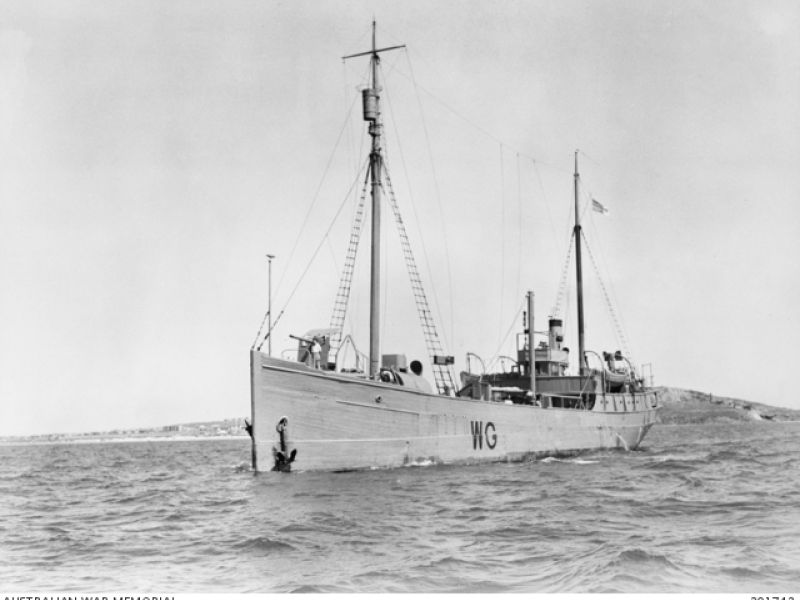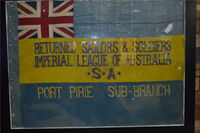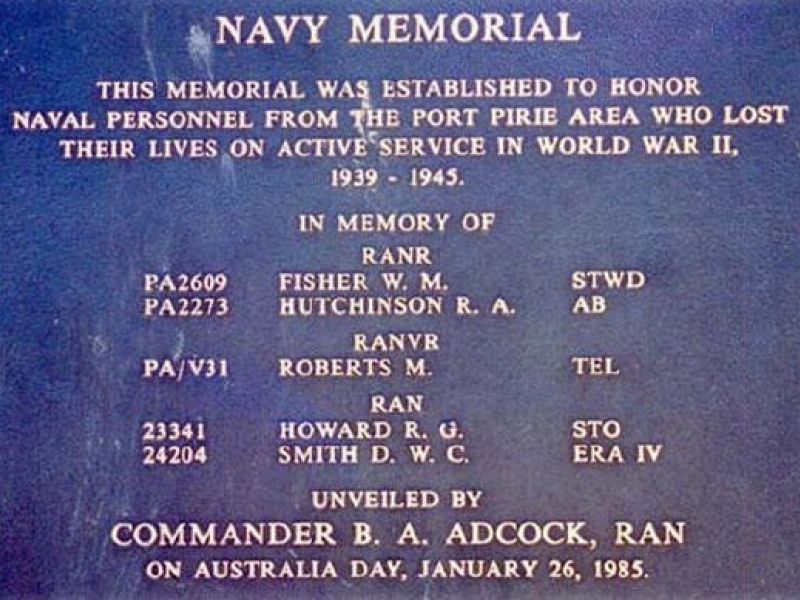The Naval Auxiliary Patrol in Port Pirie
On the 23rd February 1942 at the Pirie Yacht Club, enthusiasts between the ages of 16 and 60 who were not otherwise eligible for military service formed ‘Pirie Command’ of the Naval Auxiliary Patrol (NAP).
The entirely voluntary and honorary group became trained and patrolled the port from dusk until dawn. Their duties included guarding ships in the Port Pirie river when necessary, spotting magnetic mines and hostile planes, rescue work, escorting transports in dredged channels, special investigation, and any other jobs which might be required by the navy, army, police or Commonwealth or State civil authority.
They appointed roles within the crew including regulating area skipper, divisional skipper, instructional skipper, accountancy skipper, surgeon skipper and chaplain, as well as an experienced engineering squad to give advice and dock service.
It was desired to have three divisions in Pirie (24 boats) and 125 men. Initially the patrol had 12 boats and 60 men but they were confident of raising the number of boats and men. Uniforms were essential and it was agreed that No. 3 working rig would be suitable; this consisted of cap and badge, grey flannel trousers and shirt. It was part of the Royal Australian Navy and a discipline in accordance with naval precepts was adhered to.
The parade ground was regarded as the quarter deck and the central hall of the yacht club was the parade ground. When entering the hall, all came to attention momentarily as a mark of respect. Officers saluted on reaching the quarter deck and this sign of respect was paid at the doormat. All were to acquaint themselves with the disciplinary requirements and live up to them. These were based on common respect and the necessity of keeping friendliness among men who had to live in close contact for long periods. Orders were to be obeyed strictly and immediately.
Training equipped every member to command and efficiently operate a small vessel on reconnaissance and patrol duties via elementary navigation, seamanship, signal and first-aid classes. After the classification of members of crews they met on Friday nights; thus the naval patrol came into existence, to play a part in the defence of Port Pirie and Australia.
In May 1942, the NAP was transferred to the Royal Australian Naval Volunteer Reserve (RANVR) and was thereafter known as the RANVR NAP. By October 1942, the total strength of the NAP in Australia had increased to over 3,000 mobilised and un-mobilised reserves.
From November 1943 to March 1944, HMAS Wongala served as Guard Ship at Whyalla and also patrolled the Whyalla, Port Pirie and Wallaroo areas as ‘Mother Ship’ to the Naval Auxiliary Patrol. They remained until early 1944 when that the danger of enemy attack became remote enough to reduce the strength of the NAP to a minimum.
- Australian War Memorial https://www.awm.gov.au/collection/C234652

 RSL (Port Pirie Sub Branch) Inc.
RSL (Port Pirie Sub Branch) Inc.